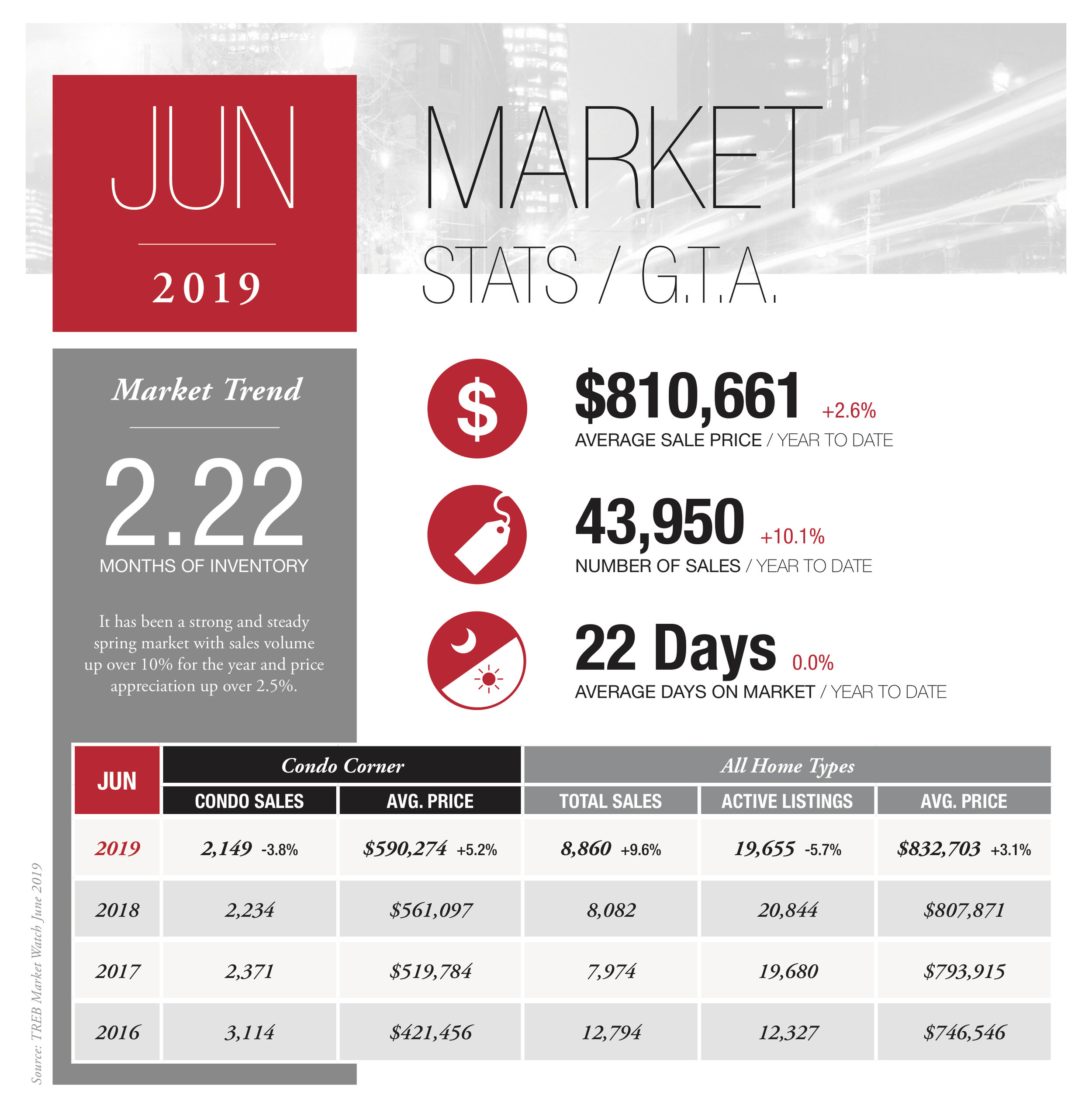July 2019 market stats are here!
The average sale price for the month was $806,755, up 3.2% compared to July 2018.
Here’s a breakdown of the average sale prices & year-over-year increases/decreases for the 416 area code:
Detached = $1,227,301 (-9.1%)
Semi-Detached = $981,802 (+5.0%)
Townhouse = $755,401 (+5.5%)
Condo Apartment = $627,927 (+7.7%)
And here’s TREB’s official market report for the month of July 2019:
Toronto Real Estate Board President Michael Collins announced that Greater Toronto Area REALTORS® reported 8,595 sales through TREB’s MLS® System in July 2019.
This result was up by 24.3 per cent compared to July 2018.
On a month-over-month basis, sales were up by 5.1 per cent, after preliminary seasonal adjustment.
New listings entered into TREB’s MLS® System in July 2019 were up compared to July 2018, but by a much lesser annual rate than sales, at 3.7 per cent. With annual growth in sales far outstripping annual growth in new listings, market conditions clearly tightened compared to last year.
Active listings at the end of July were down by 9.1 per cent year-over-year, further reflecting tightening market conditions.
As market conditions continued to tighten in July, the average selling price increased by 3.2 per cent on a year-over-year basis to $806,755.
The MLS® Home Price Index Composite benchmark was up by 4.4 per cent. Higher density home types continued to drive price growth, whereas detached home prices remained down in many communities throughout the GTA.
Broadly speaking, increased competition between buyers for available properties has resulted in relatively strong price growth above the rate of inflation for semi-detached houses, townhouses and condominium apartments.
However, the single-detached market segment, which has arguably been impacted most by the OSFI stress test, has experienced a slower pace of price growth, with average detached prices remaining lower than last year’s levels in some parts of the GTA.
If you’re thinking of making a move and would like to know how we can help, please contact us or more info.




























